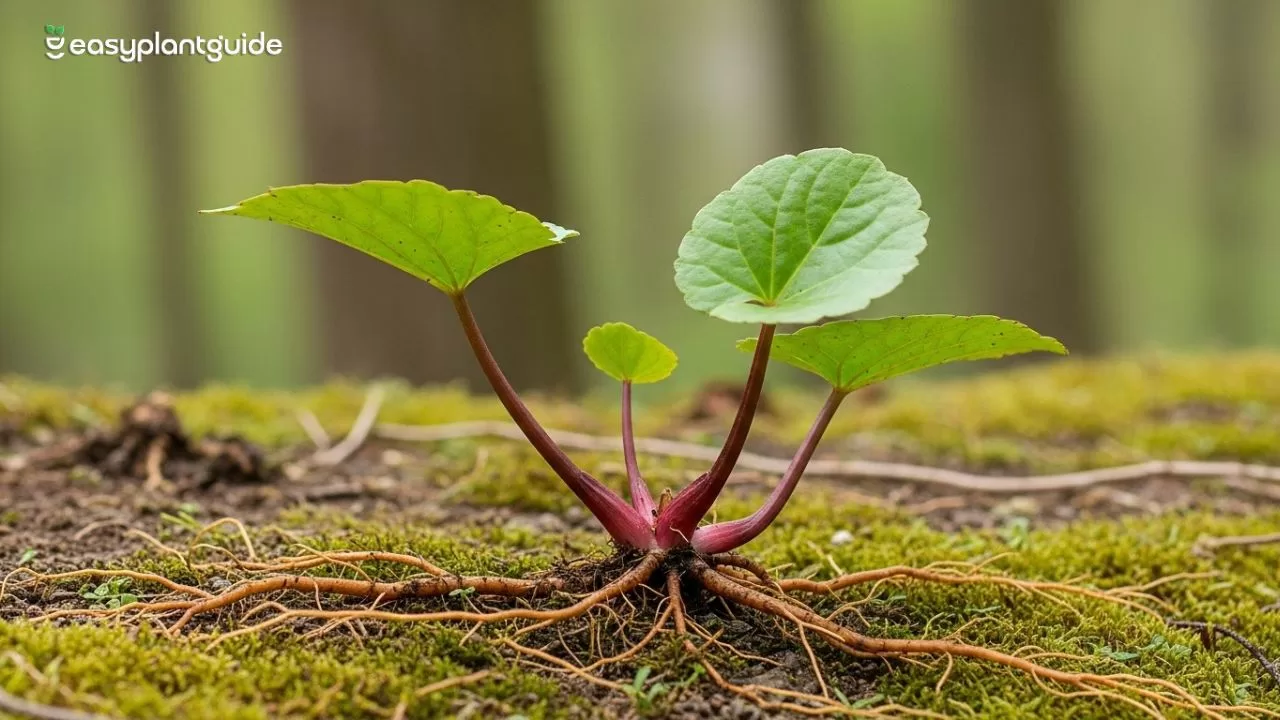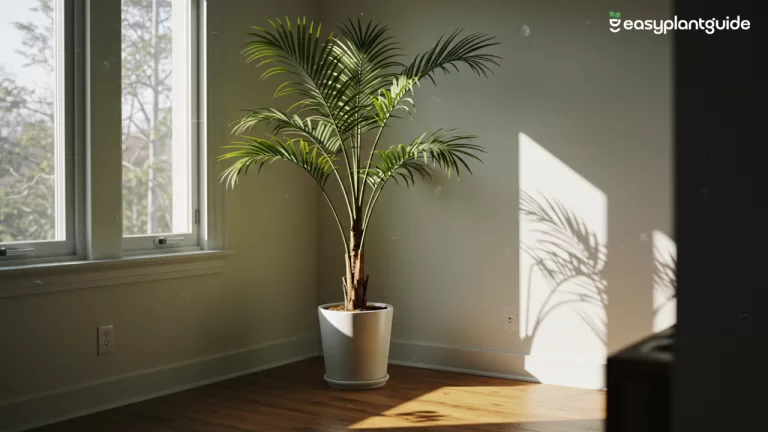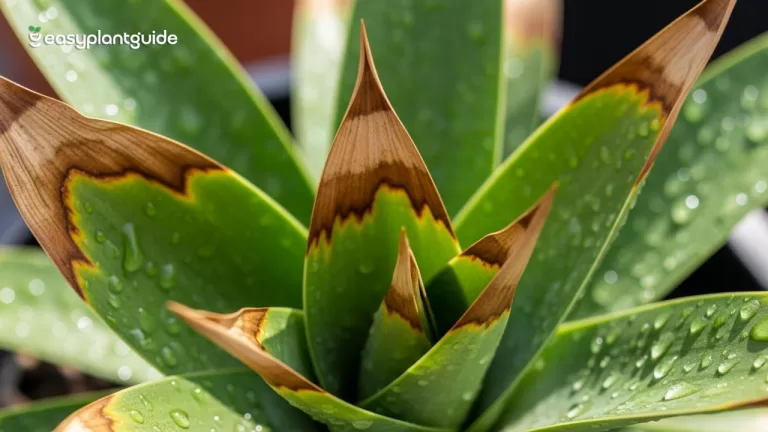Rhizomatous Plants: 9 Fascinating Facts to Know
When it comes to resilient and ever-spreading greenery, rhizomatous plants easily top the list. These underground stem growers are nature’s quiet powerhouses—constantly expanding, regenerating, and thriving no matter the conditions. It’s almost as if they’re saying, “You can’t stop me.” Their ability to multiply and come back stronger each season makes them a dream for gardeners seeking long-lasting, low-maintenance beauty. Whether you’re building a tropical oasis, stabilizing a slope, or creating a self-sustaining ground cover, rhizomatous plants are the key to sustainable, enduring, and effortlessly lush landscapes.
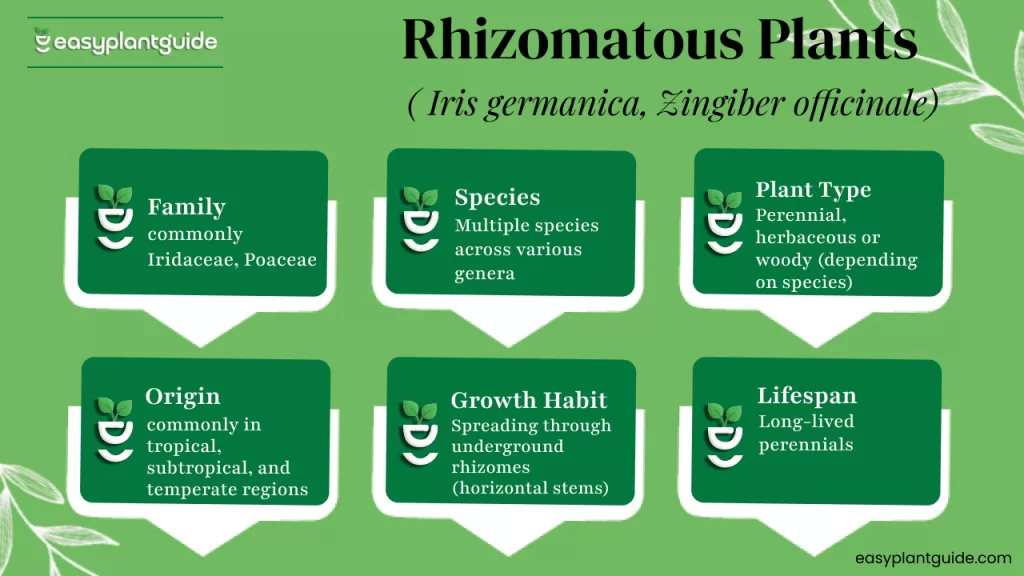
What Are Rhizomatous Plants?
Rhizomatous plants are species that grow from rhizomes, which are underground stems that store nutrients and produce new shoots and roots. Unlike regular roots, rhizomes act as both a lifeline and a reproduction system, helping the plant spread horizontally beneath the soil. These plants are known for their ability to regenerate quickly, making them hardy survivors even in challenging environments.
How Rhizomes Work in Plant Growth
Rhizomes are like the plant’s built-in survival toolkit. They store food, help with reproduction, and allow the plant to spread naturally. This underground structure ensures that even if the top part dies off due to harsh weather, the plant can regrow from the rhizome when conditions improve. It’s a self-sustaining system that keeps the plant thriving year after year.
Key Characteristics of Rhizomatous Plants
| Feature | Description |
| Growth Type | Underground horizontal stems |
| Function | Nutrient storage and propagation |
| Lifespan | Perennial and self-renewing |
| Soil Preference | Well-drained, moist, nutrient-rich soil |
| Common Habitats | Gardens, forests, wetlands, and grasslands |
Nature’s Underground Network
Think of rhizomatous plants as nature’s version of Wi-Fi—they’re always connected. Beneath the soil, rhizomes form a vast network that allows plants to spread efficiently. This system enables them to colonize large areas and stabilize soil, preventing erosion. It’s an intelligent survival strategy that has made them a favorite for gardeners who want lush coverage without constant replanting.
Common Types of Rhizomatous Plants
There’s a huge variety of plants that grow from rhizomes, and you probably have some in your garden already. From tropical beauties to hardy ground covers, they’re everywhere. Popular examples include:
- Ginger (Zingiber officinale)
- Bamboo (Bambusoideae)
- Iris (Iris germanica)
- Canna lily (Canna indica)
- Mint (Mentha species)
Why Gardeners Love Rhizomatous Plants
Rhizomatous plants are adored by gardeners for their reliability, resilience, and easy propagation. Once planted, they continue to expand and rejuvenate on their own, making them a practical choice for both beginners and experts. Benefits include:
- Low maintenance and long lifespan
- Natural ability to fill empty garden spaces
- Strong resistance to drought and pests
- Excellent soil stabilizers for erosion control
- Can be divided and replanted easily
The Role of Rhizomes in Plant Propagation
One of the most fascinating traits of rhizomatous plants is their unique way of reproducing. Rather than depending on seeds, these plants spread through vegetative propagation, using their underground rhizomes to create new growth. Each section of a rhizome has the potential to grow into an entirely new plant when divided and replanted. This natural cloning process makes them a favorite among gardeners who love easy, sustainable plant multiplication without relying on complicated propagation techniques or seeds.
Best Rhizomatous Plants for Your Garden
If you want low-maintenance plants that return every year, rhizomatous varieties are ideal. Favorites like Bearded Iris, Lily of the Valley, Canna Lily, Ferns, and Bamboo bring lasting charm to any garden. They offer both beauty and practicality, providing colorful blooms and lush greenery that stay vibrant through the seasons. Perfect for busy gardeners, these plants thrive with minimal care, ensuring your garden stays full and fresh year after year without demanding constant attention or replanting.
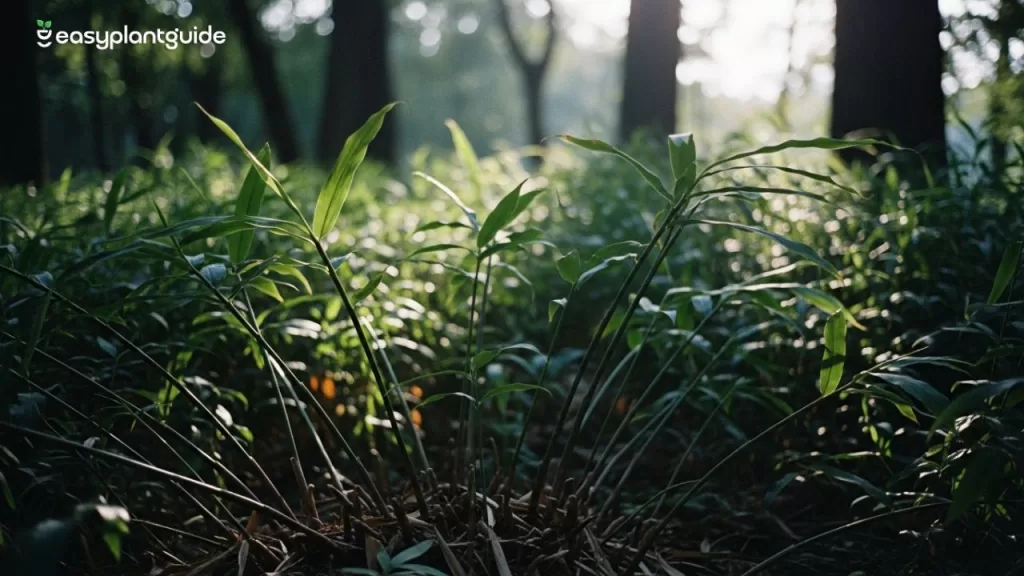
Growing Conditions for Rhizomatous Plants
Most rhizomatous plants thrive in well-drained soil with moderate moisture. They love sunlight but can also tolerate partial shade depending on the species. Make sure the soil is rich in organic matter to support rhizome growth. Avoid waterlogged soil, as too much moisture can cause the rhizomes to rot. Regular mulching can help maintain ideal moisture and temperature levels around the roots.
How to Plant Rhizomatous Species
Planting rhizomatous plants is simple and rewarding. Start by loosening the soil, then plant the rhizome horizontally about an inch or two deep. Cover lightly with soil, water well, and let nature do the rest. Within weeks, new shoots will appear, and soon you’ll have a thriving patch of greenery. Divide and replant sections every few years to manage their spread and encourage healthier growth.
Managing Aggressive Rhizomatous Plants
Some rhizomatous plants, like bamboo or mint, can become invasive if left unchecked. Their underground stems spread quickly, taking over nearby areas. To control them, use root barriers or plant them in containers. Regular trimming and division can also keep their growth balanced. With proper management, you can enjoy their beauty without letting them overrun your garden.
Rhizomatous vs Non-Rhizomatous Plants
Rhizomatous plants differ from non-rhizomatous ones in their growth and survival strategies.
| Feature | Rhizomatous Plants | Non-Rhizomatous Plants |
| Growth Type | Underground stems | Roots or bulbs |
| Propagation | Vegetative (rhizomes) | Seeds or bulbs |
| Lifespan | Perennial | Annual or biennial |
| Maintenance | Low | Moderate to high |
| Spread | Horizontal under soil | Upright or limited spread |
Indoor Rhizomatous Plants for Home Décor
Did you know some rhizomatous plants make stunning indoor additions? Varieties like ZZ plants, snake plants, and ferns are perfect for interiors. They thrive with minimal light and water while purifying the air. Plus, their lush, green foliage adds a calming natural vibe to any space, making them an excellent choice for homes and offices alike.
Rhizomatous Plants and Soil Health
These plants do more than just beautify your garden—they actively improve the soil. Their rhizomes loosen compacted earth, enhance aeration, and stimulate beneficial microbial activity. By spreading underground, they help prevent erosion and add organic matter as old roots decompose. Over time, this natural process enriches the soil, creating a healthier environment for other plants to thrive. It’s nature’s built-in system for renewal, working quietly beneath the surface without the need for fertilizers or hum
Propagating Rhizomatous Plants Step by Step
Propagation through rhizomes is one of the easiest gardening techniques. Follow these simple steps:
- Gently dig up the plant and expose the rhizomes.
- Cut the rhizome into sections, ensuring each piece has at least one bud.
- Replant the sections in well-draining soil.
- Water lightly to encourage root formation.
- Watch new shoots emerge in just a few weeks.
Advantages of Rhizomatous Growth
Rhizomatous plants have several evolutionary advantages that explain their popularity in the wild and in gardens. Their underground network helps them store nutrients and moisture, ensuring survival through drought, cold, or even fire. When damaged, they regenerate quickly from the rhizome, making them almost indestructible. It’s the plant world’s ultimate comeback mechanism—a lesson in resilience and regeneration.
Common Problems and Care Tips
While generally easy to maintain, rhizomatous plants can occasionally face issues like rhizome rot due to excess water or poor drainage. Keep an eye on soil moisture and provide adequate airflow. Fertilize lightly in spring to promote healthy shoots, and remove any dead leaves to keep pests at bay. Most importantly, give them room to spread naturally without overcrowding.
Interesting Examples Around the World
Rhizomatous plants aren’t limited to gardens—they’re found in diverse ecosystems across the globe. From bamboo forests in Asia to ferns in tropical rainforests and iris fields in Europe, these plants dominate landscapes naturally. Even edible crops like ginger and turmeric thrive because of their rhizomatous growth, proving that this underground structure is a universal key to plant survival and abundance.
Conclusion
The world of rhizomatous plants is an incredible example of nature’s ingenuity—one that blends beauty, strength, and survival in perfect harmony. These plants don’t just grow; they evolve beneath the soil through their rhizomes, which serve as storage centers, roots, and reproductive organs all in one. This underground network allows them to spread effortlessly, ensuring that even if one part is damaged, the plant continues to thrive.
What makes rhizomatous plants so special is their unmatched adaptability. They can flourish in dry, poor, or even compacted soils where many others would fail. Their ability to regenerate from even a small fragment of rhizome makes them virtually indestructible—a trait that gardeners and landscapers absolutely love. From preventing soil erosion on slopes to creating self-sustaining green carpets, these plants offer both practical and aesthetic value.
Check out our other Plant Blogs.

